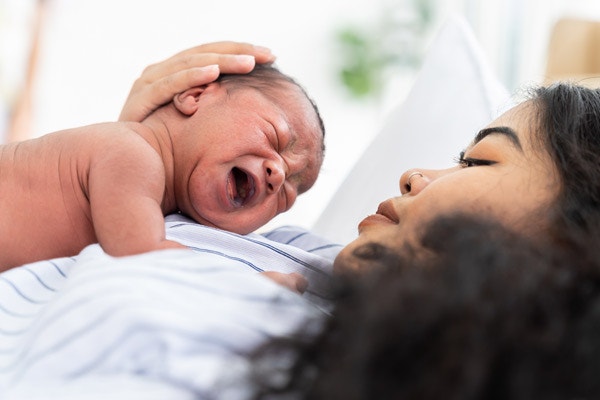To help make it easier for you to communicate your birth preferences with your health care providers, Motif Medical has developed a wonderful free birth plan template! Please feel free to download this PDF to help organize your thoughts. Make sure you print out a copy to take with you whenever baby decides to make their appearance - it's an easy way to let your birth team know what you want. Be ready to say ‘this is my birth plan!’


“If you don't know your options, you don't have any.” - Diana Korte
This is perhaps one of the most well known quotes in the birthing world and it's also the best reason I know to develop a birth plan, although I prefer to call them “birth preferences.” The thing is, a baby’s birth can't be planned. Even when some details are known, estimated due date, location, preferred birth method, etc., there is too much about it that is unknown!
However, it’s worth taking time during the third trimester to research options that might come up on the big day so you can clarify your preferences. Think of it as putting together a tool box. All of the tools will fit in the box, but there are probably some that you want to be at the top for easier access. But if you needed to, you can always get to the tools at the bottom.
Birth Plan Checklist
So what should you think about when you’re writing a birth plan? The following is a list of things to consider. This list is not comprehensive, but I did try to include what I think are the most important and most common options that people ask about.
Birth Plan Cheklist
Before Birth
Who Do You Want In The Delivery Room With You?
At the top of your birth preferences, you'll want to list anyone you plan to have with you at the delivery—your partner, doula, friend, birth photographer, etc.
What Comfort Items Do You Want to Bring?
Let your care providers know if you want to use alternative lighting to create a more homey atmosphere—a strand of Christmas lights or flameless candles can make a cozy birth environment. If you want to incorporate music, audio hypnotherapy, or essential oils, make sure you include that in your preferences.
Do You Want to Eat/Drink During Labor or Get IV Fluids?
Some people find that labor makes them extremely nauseous, so eating and drinking is the last thing they want to do, but it's a good idea to know the risks and benefits of taking in your own nutrition while in labor. My favorite resource for information on this topic is a blog post published by Evidence Based Birth titled, Evidence On: Eating and Drinking in Labor.


What Would You Prefer to Wear During Labor?
Everyone has their own comfort level on this—some people choose to buy a labor gown to wear during the delivery, some people wear the hospital gown, and some want to wear their own clothes. If you prefer your own clothes, don’t forget to leave room for them in the hospital bag. Know that birth can be messy and the clothes you wear might not wash clean.
To Whom Do You Want Questions Directed?
When you first get to the birth center or when your midwife first arrives at your house, there will be several questions to answer. If you'd prefer to have your partner or support person answer questions for you, make sure to put that in your list of preferences.
Do You Want to Move Around or Walk During Labor?
It's a good idea to talk about this option before labor starts, as some facilities don't have the equipment to allow this while they're monitoring the baby's heartbeat. Talk to your provider about what you want to do during labor so that you are all on the same page.
Some birth centers will have options such as birthing stools, birth balls or peanut balls, a labor tub, showers, or a squat bar. Find out what will be available at your facility and what you will need to bring.
Vaginal Vs. C-Section
Have You Researched Cesarean Sections?
Even if your plan is for vaginal delivery, everyone should read about having a baby via a c-section. There are several options you'll want to research, including what type of anesthesia you'd prefer and who you want to be with you in the operating room. Ask your provider if having a clear drape is an option at their facility, as that may be another thing you want to consider.
In general, you should also be preferred to have answers for the following questions:
- What's your delivery preference?
- Type of anasthesia you prefer
- When do you want the cord clamped
- Who do you want with you in the Order
- If you want a clear drape or one you can't see through
- Who do you want to stay with the baby in case they need to go to the NICU
During Labor
What Are Your Preferences For Pain Management?
If you are birthing in the hospital, you will have several options for pain relief, (epidural and IV pain medications are common) and some hospitals will have the option of nitrous oxide, which is administered through a mask. If you prefer to be unmedicated, be sure to note that in your plan.
Which Induction Method is Preferred (if Needed)?
You may want or need your labor to be induced, so you'll want to familiarize yourself with the commonly used methods. Pitocin, cytotec, and a foley bulb are often used to get labor started in someone who isn't already having contractions. Pitocin and the breaking of your water (artificial rupture of membranes/AROM) can be used to increase the frequency or strength of your contractions. A vacuum extraction or forceps can be used during the pushing stage of labor to help assist your baby being born.
All of these interventions carry their own list of pros and cons. You'll want to familiarize yourself with each one and indicate your preference of using or not using them on your birth plan.
Similar to some preferences for the "Before Birth" period, have answers prepared for the following items:
- What are you eating or drinking preferences during labor?
- For hydration, do you prefer IV placement or continuous fluids
- Any paid medications you do or don't want?
During Delivery
What Birthing Positions Do You Want to Use?
Let your provider know if you have any strong preferences about where and how you deliver your baby. This should include wether you want perineal support during the birth, if you would rather have an episiotomy, or let your tissues tear on their own if needed.


Do You or Your Partner Want to Catch the Baby?
Talk to your OB/GYN to see if this is an option. Also let them know if you want to delay the clamping and cutting of the umbilical cord, and find out their usual wait time for delayed cord clamping. It may be that their typical timing is acceptable for you or it might be something you want to remind them of at the delivery.
Newborn Baby Care
Do You Want to Preserve Your Placenta and Cord Blood?
If you plan to preserve your placenta or cord blood, write this down on your birth plan so your team can take the right steps.
Are You Prepared for Newborn Baby Care?
One of the first decisions you'll want to make about the care of your new baby is what happens in the first hour after the birth, also known as the ‘golden hour.’ The American Association of Pediatrics, the CDC and the World Health Organization all recommend that baby have immediate skin-to-skin contact with mother after delivery (or as soon as the baby is medically stable and the mother is awake). Mother and baby should stay that way for at least one hour. This holds true regardless of whether baby was born via vaginal delivery or c-section.
Other important decisions to make about the care of your new baby include the Vitamin K injection, erythromycin eye ointment, and the Hepatitis B vaccination. These medications can be administered any time after the delivery or delayed for the first hour.
You'll want to indicate if you want (or don’t want) your baby to use a pacifier, if you plan to breastfeed or bottle feed, and if you prefer a circumcision if you have a boy. You may want your baby to stay in your room with you (generally called “rooming in”), or to be taken to the nursery while you are sleeping. And don’t forget to plan to meet with a lactation consultant (if you choose to breastfeed.)
Whew! That's a lot to think about! While there's so much planning for the postpartum period and baby’s first days, a birth plan is also important. It can serve as a great roadmap to guide your birth experience toward one that you are comfortable with. Happy birthing!
Information provided in blogs should not be used as a substitute for medical care or consultation.









